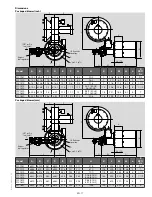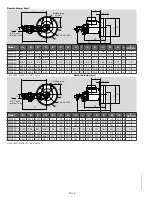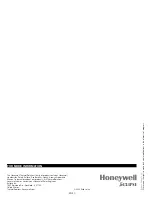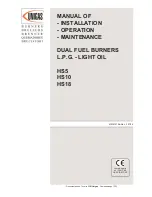
W
innox · Edition 12.20
EN-6
ADJUstMent, stARt AnD stoP
In this chapter, you will find instructions on how to adjust, start, and
stop the burner system. Become familiar with burner control methods
before attempting to make adjustments.
DAnGeR
– The Winnox burners are designed to mix fuel with air and burn
the resulting mixture. All fuel burning devices are capable of
producing fires and explosions if improperly applied, installed,
adjusted, controlled, or maintained.
– Do not bypass any safety feature; fire or explosion could result.
– Never try to light a burner if it shows signs of damage or
malfunction.
step 1 - Reset the system
1
Set the low gas pressure switch to 20% below the “Fuel Inlet
Pressure” range as specified in the appropriate datasheet.
2
Set the high gas pressure switch to 20% above the “Main Gas
Inlet Pressure” range as specified in the appropriate datasheet.
3
Close all the burner gas valves - manual and automatic.
4
Try to ignite the burner; be sure the flame monitoring system in-
dicates a flame failure.
5
Activate the pressure switches and other limit interlocks. Be sure
the switches fail as intended in the event of a power failure.
DAnGeR
– If simulated limits or simulated flame failure do not shut down
the fuel system within the required failure response time,
immediately correct the problem before proceeding. Refer to
page 10 (Assistance in the event of malfunction).
6
If the burner is firing into a duct or chamber with a circulating fan,
start the fan to produce full process air flow past the burner.
7
Adjust main gas inlet pressure to the ratio regulator within the
range specified in the appropriate datasheet.
WARnInG
– Gas inlet pressures must stay within the specified range.
Pressure above the specified range can damage the ratio
regulator.
– Pressure below the specified range can impair the ability of the
ratio regulator to control the gas flow.
– Operating the system outside the specified range can cause
excess fuel consumption and the possible accumulation of
unburned fuel in the chamber.
– In extreme cases, this accumulation of unburned fuel may
cause fires or explosions.
8
Verify the actuator opens the air butterfly valve towards the back
of the burner as shown in figure "Air butterfly valve open direction".
If it doesn’t, refer to the actuator’s literature for instructions on
how to reverse the direction.
Closed
Open in this
direction
only
Open
Back
Air butterfly valve open direction
step 2 - set low fire air
1
Start combustion air blower.
2
Drive control motor to low fire position.
3
Measure the air differential pressure between tap
C
and the com-
bustion chamber.
note:
The pressure tap is in the open position when the screw
inside the tap is unscrewed approximately 1/2 turn. Do not remove
the screw. Be sure to tighten the pressure tap screw clockwise to
the closed position after pressure measurements have been taken.
To chamber
Manometer
Tap C
Air differential pressure
4
Set low fire air.
a
Loosen the set screw
A
on the burner side of coupling. There is
a slot in the end of the butterfly valve shaft that is parallel to the
air damper. This slot is used for visual indication of the butterfly
valve position. The butterfly valve is closed when the shaft slot is
perpendicular to the direction of air flow through the butterfly
valve.
b
Rotate the air butterfly valve shaft to a fully closed position. (Holes
in the butterfly valve will supply low fire air.)
c
When firing into a positive chamber pressure, rotate the air but-
terfly valve from the closed position in the direction of actuator
travel to obtain a minimum 0.3" w.c. (0,8 mbar) air differential
pressure.
d
Hold the butterfly valve shaft firmly in place and tighten set screw
2
.
➔
High fire air adjustment is not required if the burner is firing into
a neutral pressure chamber and a 90° travel control motor is
used. It may be necessary to limit control motor stroke to less
than 90° if firing into a large negative chamber. Contact Eclipse
for further information.
A
Control
motor
Coupling
Air butterfly valve adjustment
5
Verify high fire air:
a
Drive control motor to high fire, full open.
b
Compare the high fire air differential pressure between Tap
C
and
the combustion chamber to the approximate datasheet chart “Air
Δp vs. Input”. If high fire air is insufficient, refer to page 10
(Assistance in the event of malfunction).
6
Return the control motor to the low fire position.
7
Close the pressure taps.
BV shaft shown
in closed position
Air butterfly valve shaft






































